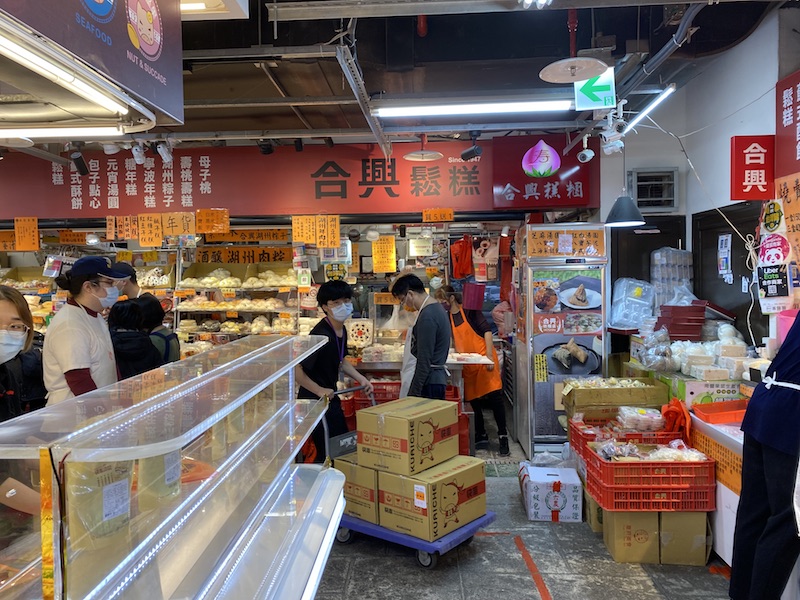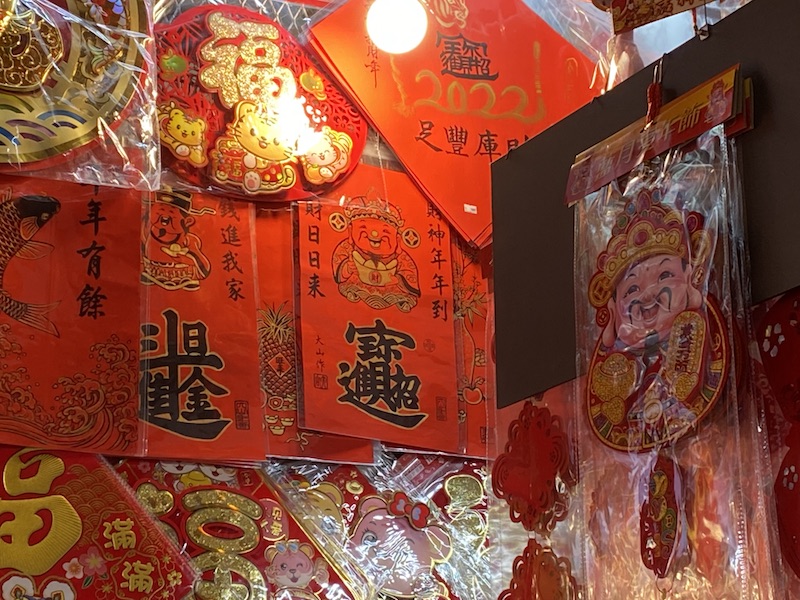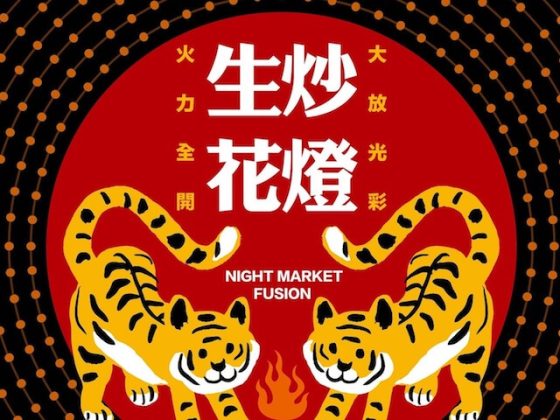Chinese New Year is always immediately preceded by a shopping frenzy as people stock up on dried snacks, decorative couplets, and other auspicious goodies (niánhuò 年貨) ahead of the festival. In Taipei, Nanmen Market near Chiang Kai-Shek Memorial Hall is a local favorite for seasonal shopping, along with Dihua Street in Dadaocheng. As we draw closer to the Year of the Tiger, here’s everything you need to know about one of Taipei’s most popular festive markets.
A Brief Backstory to the Market
As anyone with a month of survival Chinese will know, name Nanmen (南門) translates to South Gate, owing to the market’s location along Taipei’s (now mostly demolished) city walls. Originally known as Chitose Market, it was established in 1909, making it by many accounts on of the longest running markets in the city, and has operated in various locations in the area, moving most recently in 2019. It’s currently going through a bit of a transition phase, with the current location being a temporary market while the original building is replaced with a sleek steel-and-glass construction that will hopefully open some time later this year.

Year round, the market is an interesting place to explore because of its strong cultural ties to China, with many of the stalls run by ethnic mainland families and businesses that came over to Taiwan after the Chinese Civil War. As a result, this is one of the few marketplaces in Taipei to have such a diverse offering of regional foodstuffs from across the provinces, from sweet Shanghainese sponge cakes to fiery Hunanese sausages to the Zhejiang-style zongzi (粽子) that re-crowd the market ahead of Dragon Boat Festival in June. That may be in part why Nanmen Market strikes such a nostalgic chord around Chinese New Year for many families in Taipei, an area that was heavily settled by mainland migrants in the middle of the last century.
The Layout
The temporary market is set across two floors, with clothing and accessories, fresh produce, dried goods, and snacks on the first floor, and a food court on the second. While Chinese New Year shopping is by no means a food-only activity, you’ll want to focus your time on the downstairs area as the Nanmen’s appeal at this time of year is mostly in the abundant nibbles and sweet things that are to be found there.

Of course, decorations are also a big part of the New Year shop for many people. Nanmen caters to this need in a pinch, with a stall selling spring couplets and calligraphy near the entrance. These are pretty affordable and start at around NT$35 for auspicious messages that you can stick up outside your front door. However, the selection is much bigger in places like Dihua, so if your priorities are to decorate rather than snack, best to head there.
Generally speaking, the holiday food at Nanmen can be roughly divided up into four rough categories: meats, nuts and candies, fruit, breads and cakes.
Meats
Fish may take center stage most tables come New Year’s Eve (a play on the fact that fish (魚) and surplus (餘) have the same pronunciation), but pork is in many ways the star of the season. It’s traditional in many households for tables to be loaded up with a charcuterie platter (拼盤) of various cured hams and sausages, and in this respect Nanmen excels.
Begin by stocking up on jerky (肉乾), a must have at this time of year. Taiwanese jerky typically uses pork rather than beef, is sweeter than its American counterpart, and supposedly has the power to ward off negative energy. Kinglong (stalls B58–B59), has been operating for some 70 years and makes the snack in its original flavor, as well as seasoned with black pepper or garlic.

Cured sausages, hams, and pork belly, meanwhile can be picked up from Wan You Quan (萬有全, B55–B56), which sells a variety of regional meats with various mainland Chinese origins. Particularly worth trying are is Cantonese style sausage méiguī yuānyāng (玫瑰鴛鴦) which is best steamed, sliced, and served as a topping to claypot rice (recipe here) or the fiery Húnán là cháng (湖南辣腸) from central China.
Nuts and Candies
Generally, it’s the done thing in Taiwan to have a selection tin full of sweet and salty nibbles on the table when people come over. Pumpkin, watermelon, and sunflower seeds (collectively referred to as guāzǐ 瓜子) are very popular. Eating them is believed to bless you with many children, due to the character 子 also meaning “children” — and well, “seeds”… you get it. You’ll find all that you need and more at Kuaiche (快車, B25–30). And if you have more of a sweet tooth, go ahead and throw some nougat into the mix from Tangwang (唐旺手信, B45).
Peanuts are also popular (if there’s ever a bad time to be eating peanuts in Taiwan, we’d love to know), most frequently cooked and crushed into candies like huāshēng má lǎo (花生麻荖). A colloquial name for peanuts is “the longevity nut” (長壽果), and you’ll find these tasty treats at several stalls around Nanmen’s first floor.
Breads and Cakes
Rice cakes are an essential on most people’s Chinese New Year shopping list, given that their Chinese name, niángāo (年糕), is pronounced the same as longevity (年高) — by now it should be apparent that CNY foods are pretty punny. You pick them up at Hoshing (B01), a 75-year-old pastry shop that is also extremely popular around Lantern Festival for it’s tangyuan rice dumplings (You can check out a more detailed overview of the Hoshing here).

Most shoppers will also treat themselves to a sponge cakes (鬆糕) while they’re there, which come in several traditional flavors including sesame paste (芝麻), red bean (紅豆), and peanut (花生). A historical aside: Hoshing’s red bean cakes are famous for being a personal favorite of former first lady Madame Chiang Kai-Shek.
At several stalls you’ll also likely spot jujube-studded red date mantou (紅棗饅頭), a festive food with origins in China’s Shandong Province. They are often bought as altar offerings (in Shandong they were most associated with ancestor worship) but are also eaten over the holiday period as locally they are also associated with prosperity.
Eat Your Way through Chinese New Year
- Celebrating Lunar New Year with Sweet and Savory
- Chinese New Year in Taiwan : The Six Days of Chinese New Year (part one)
- A Guide to Lunar New Year Dining in Taiwan













Comments are closed.